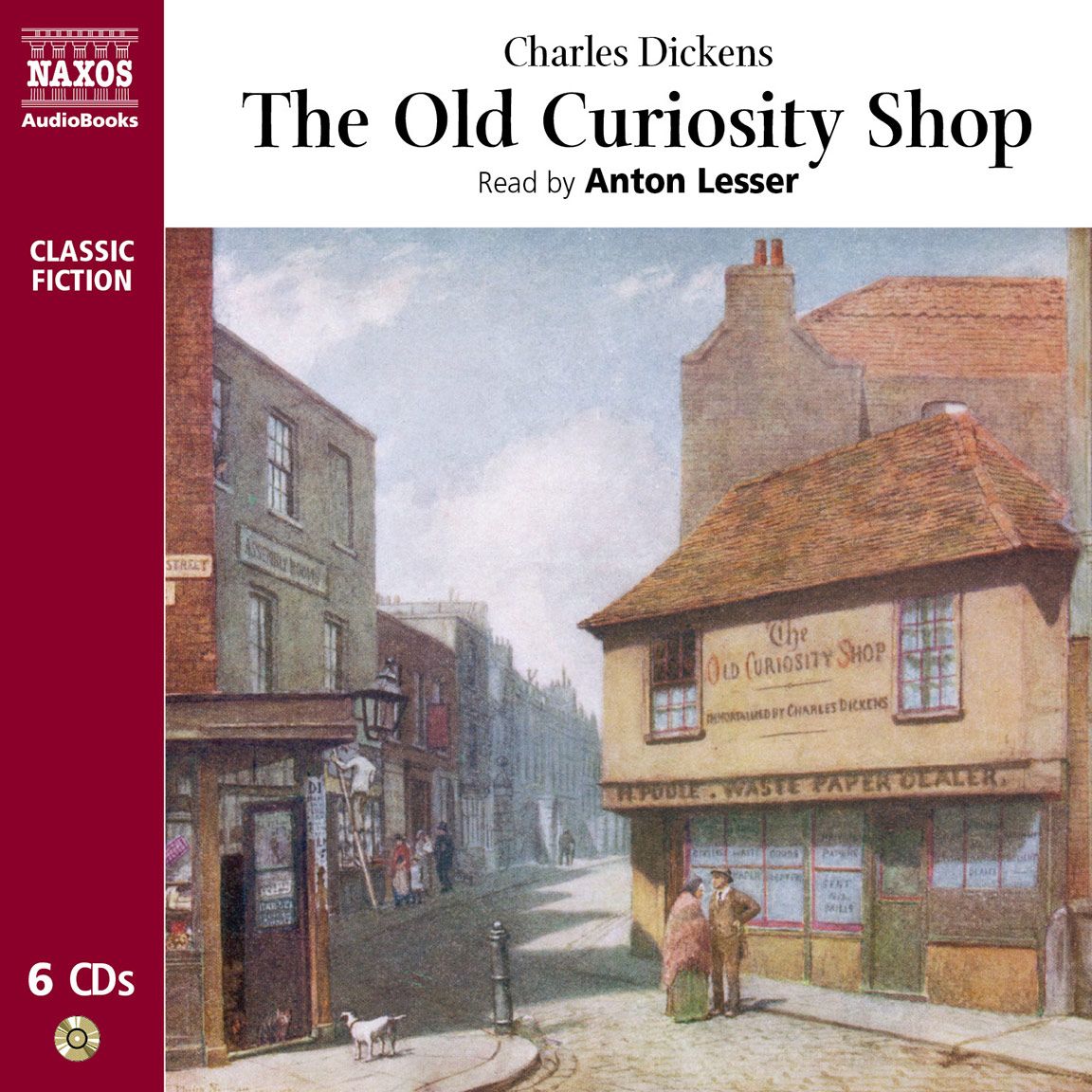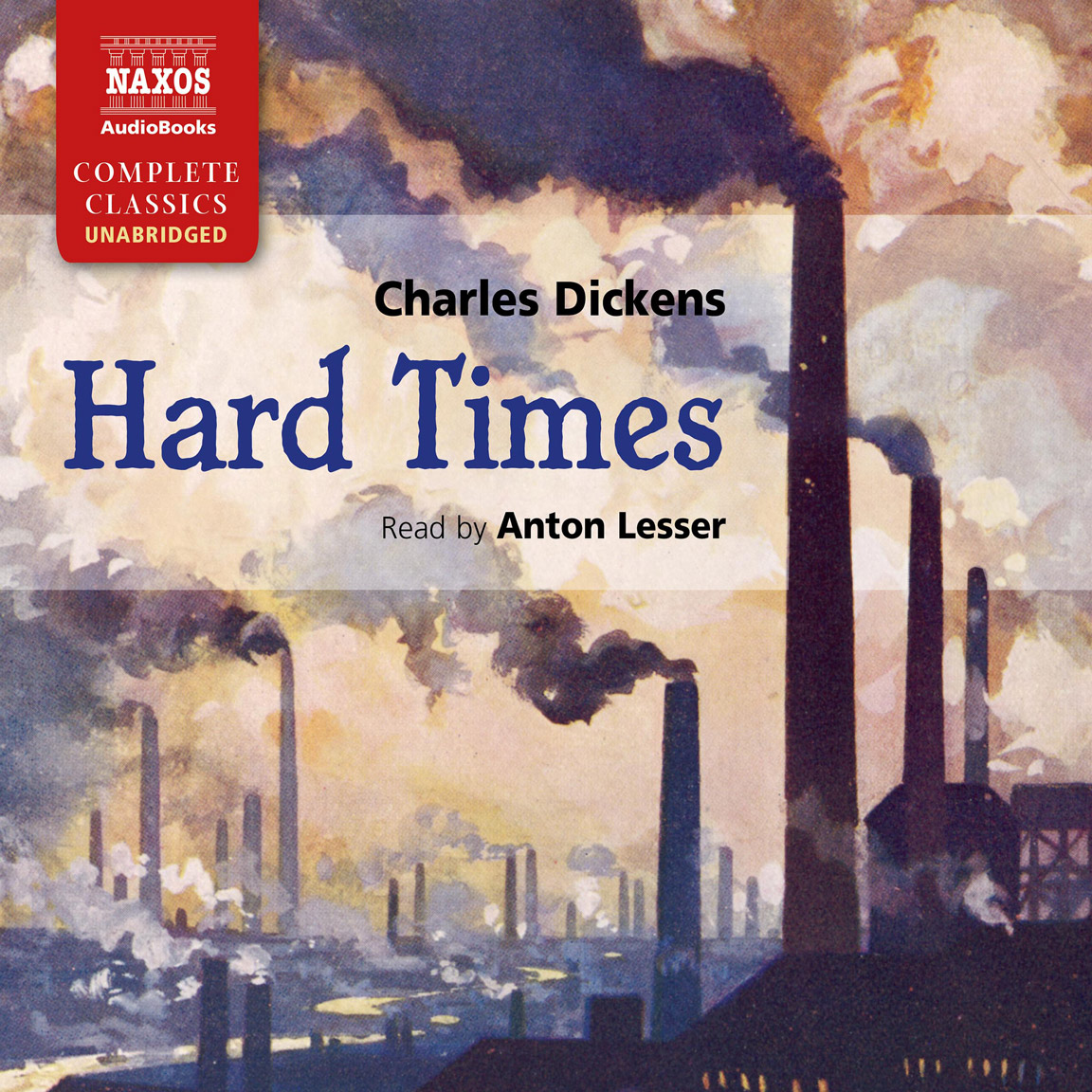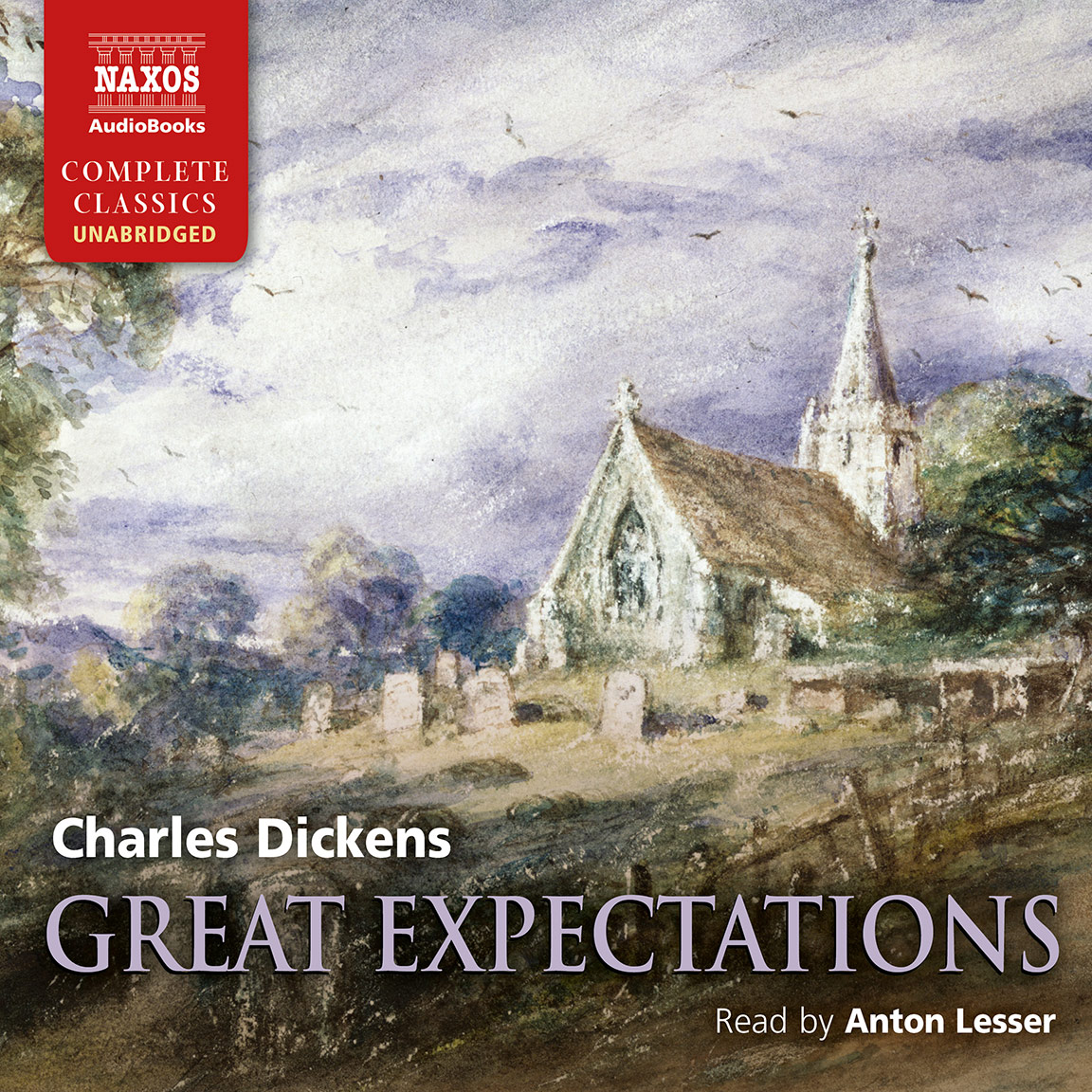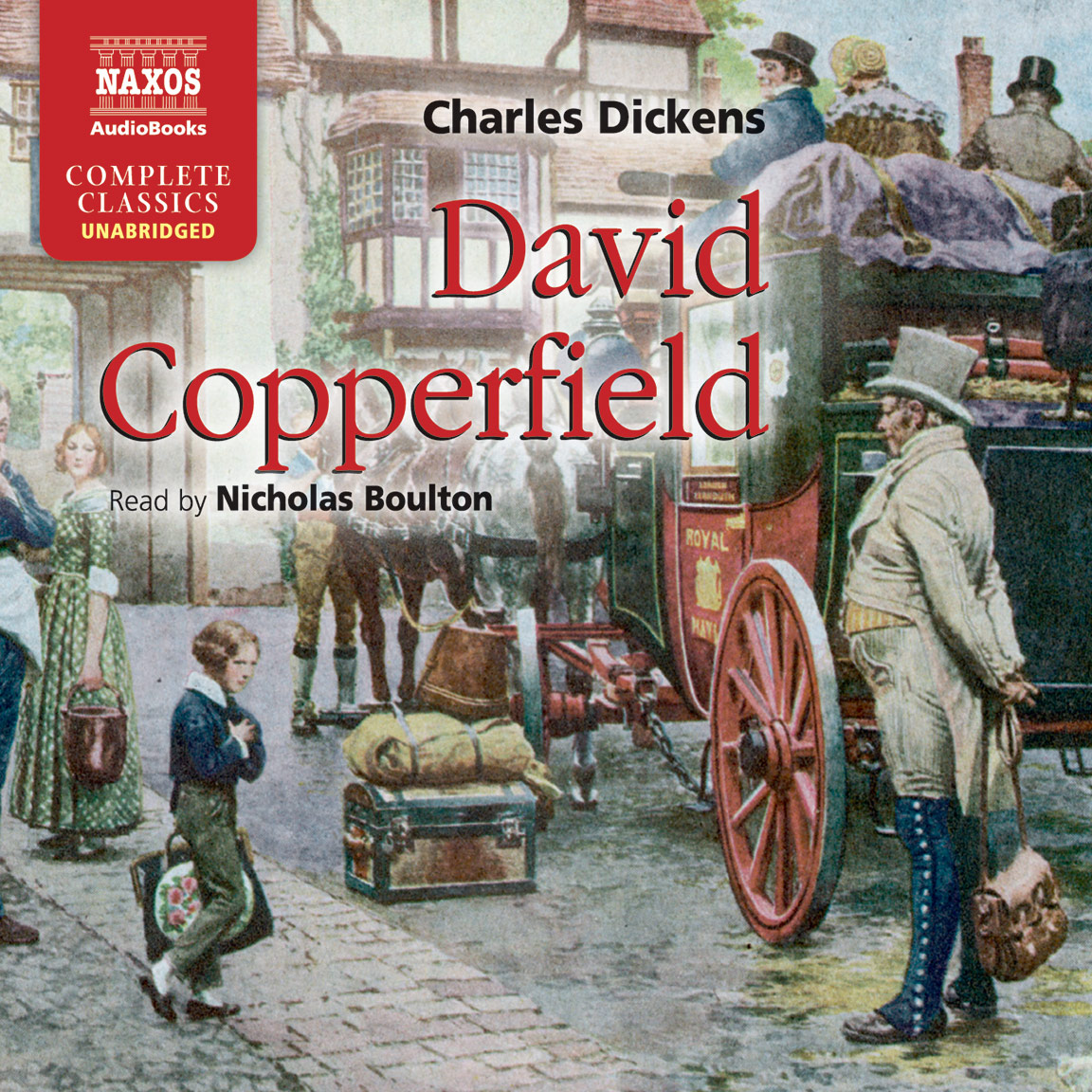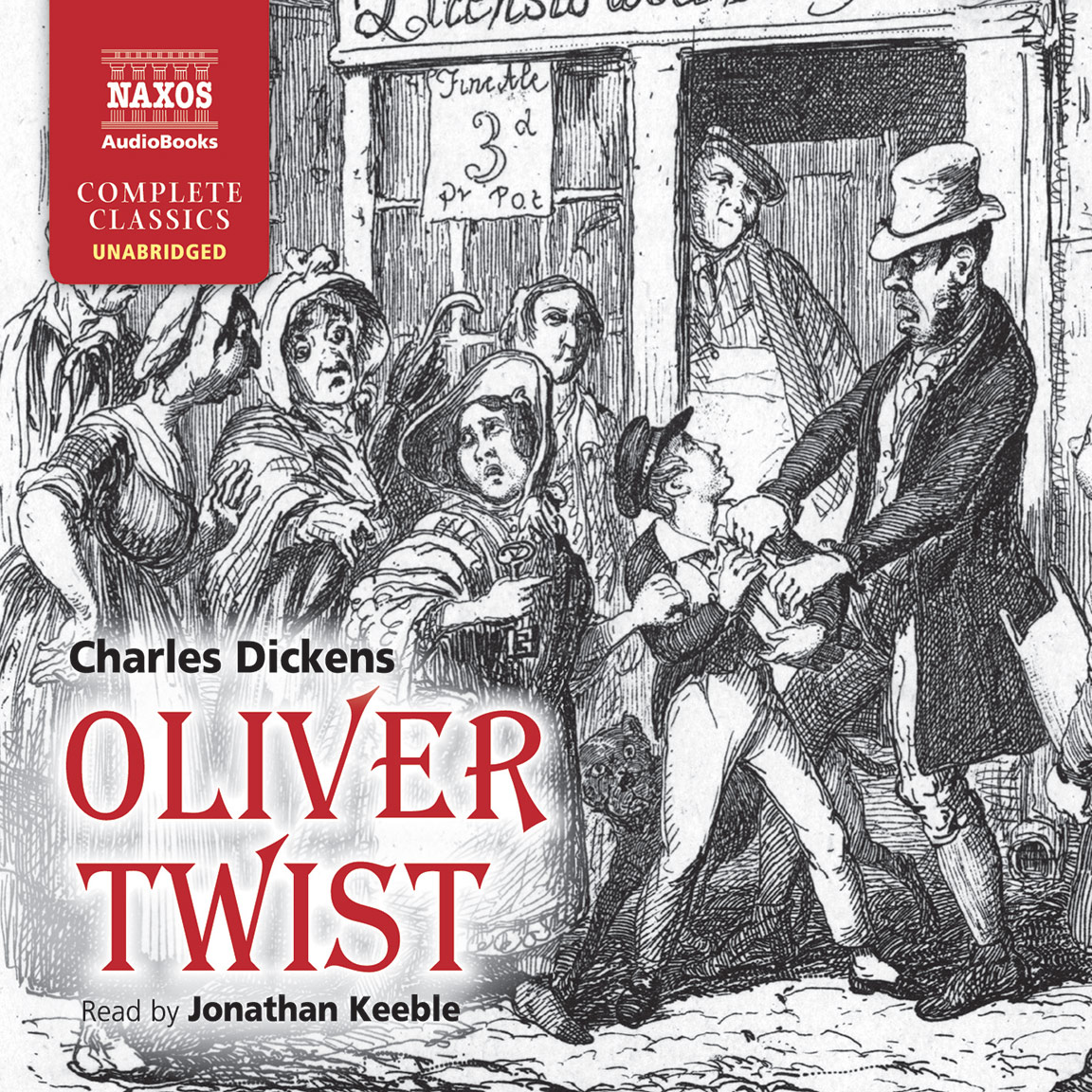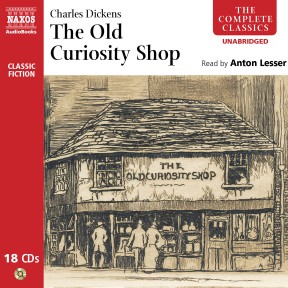
Audio Sample
Charles Dickens
The Old Curiosity Shop
Read by Anton Lesser
unabridged
Death, innocence, sacrifice and corruption – The Old Curiosity Shop is vintage Dickens. Provoking an unprecedented outpouring of public grief when it was first published, it follows the story of Little Nell and her feckless grandfather. Forced to leave their magical shop of curiosities in London, they are pursued across the English countryside by the grotesquely evil dwarf Quilp. They escape – but at what cost? Part tragedy, part allegory, this is Dickens at his most intense; drawing on his own experiences, he weaves a story of extraordinary emotional power.
-
Running Time: 22 h 20 m
More product details
Digital ISBN: 978-962-954-816-2 Cat. no.: NAX89512 Download size: 326 MB BISAC: FIC004000 Released: January 2010 -
Listen to this title at Audible.com↗Buy on CD at Downpour.com↗Listen to this title at the Naxos Spoken Word Library↗
Due to copyright, this title is not currently available in your region.
You May Also Enjoy
Reviews
The lascivious and repellent dwarf Quilp who dogs saintly Little Nell and her feckless grandfather is one of Dickens’s most vividly nasty creations. Anton Lesser is wonderful in all the intricacies of this powerful fable – a sound investment for winter evenings.
Rachel Redford, The Observer
Booklet Notes
The Old Curiosity Shop was never intended to be a novel; it began life as a short story. In 1840 Dickens had decided to launch a new periodical entitled Master Humphrey’s Clock, containing a random selection of stories, satires and articles linked by ‘Master Humphrey’, who stored them in his clock for the enlightenment and enjoyment of his literary friends. This ‘club’ was reminiscent of Dickens’s first great success The Pickwick Papers. Nevertheless, the project was a gamble for Dickens; the stakes were high, and he was attempting to try something new on a weekly basis. The first issue introduced his narrator figure, Master Humphrey (Dickens himself, thinly disguised), who wanders the streets of London observing the day-to-day life there – its buildings and people.
At its first appearance Master Humphrey’s Clock sold 70,000 copies and it appeared that it might be a successful venture. Dickens had visions of earning £10,000 a year. However, by the third issue, public interest in a magazine that seemed to be merely a disparate and random collection of pieces had sharply fallen away. Dickens’s intuition told him his public was disappointed in him, and he set about making amends by abandoning Master Humphrey and his clock and writing a new full-scale novel in weekly instalments, based on a story Humphrey had already begun to tell, of a chance meeting with a face in the crowd – Little Nell.
The plight of Little Nell – an innocent child-victim, like Oliver Twist – had probably already prompted Dickens to start thinking
13about expanding the ‘little child-story’ (as he referred to its first incarnation). The theme of childish innocence threatened, a major theme of his output, seemed to stimulate his creative powers, and the character of Little Nell came to obsess him at this time with the morbidity that always lay beneath the surface of his personality. Recent tragic events in his life encouraged this state of mind. Mary Hogarth, his wife’s youngest sister, moved into the Dickens household in 1836, shortly after his marriage. At seventeen she was taken ill after a family trip to the theatre and died suddenly in Dickens’s arms. He was shattered by the experience and wore a ring which he had taken off her dead finger for the rest of his life. In an excess of grief he kept her clothes and asked to be buried with her upon his death. He relived his grief in the creation of Little Nell, closely modeling her character on his ideal ‘child’ – Mary Hogarth.
The world-wide
response to the
death of Little
Nell is legendary
In order to concentrate exclusively on writing the novel, Dickens took a house away from London at Broadstairs in Kent. He worked daily from seven o’clock in the morning to two o’clock in the afternoon uninterrupted – and the characters and ideas flowed. This was just as well, for he had set himself an arduous task in providing weekly instalments, rather than his usual monthly parts. Sometimes he was barely two weeks ahead of printing.
Dickens structured his book around a journey. A journey gives opportunities for improvisation week by week; anything can happen. This structure also pays tribute to the genre of the Picaresque novel – the novels of journeying and rambling such as Don Quixote and Humphrey Clinker were both influences from Dickens’s childhood reading. Nell and her Grandfather venture into the unknown landscape of Victorian England, pursued by the evil dwarf Quilp. The two innocents, wandering abroad without purpose or plan, discover a world full of as many curiosities as they have left behind in their shop. The countryside and the emerging industrial landscape of the Midlands and the North provide a back- drop to the story, whilst encounters with puppets, wax-works, giants, dwarfs and performing dogs provide a grotesque illusion of life, adding a fantastical dimension to Nell’s fears and dreams.
The journey seems to go by way of Hampstead through Buckinghamshire and Oxfordshire and on to Birmingham, where Dickens creates a picture of industry destroying nature: ‘…coal- dust and factory smoke darkened the shrinking leaves, and coarse rank flowers; and… the struggling vegetation sickened and sank under the hot breath of kiln and furnace…’
The journey may end in Shropshire, which Dickens once admitted was the county of Nell’s death, but he is deliberately imprecise as to topography (contributing to the book’s eeriness). City-born, there is no doubt that Dickens was more at home describing an urban scene than a rural one – he was no Thomas Hardy, though there is more of the country in this than in any other of Dickens’s novels.On one level the book is an allegorical journey – where innocence will be tested and tried, ultimately to fracture and break. The end is a foregone conclusion, pervading the whole book with a biblical tone. Little Nell has to be sacrificed. In an early chapter Nell identifies herself and her grandfather with Christian in Bunyan’s great allegorical tale of a man’s journey to salvation The Pilgrim’s Progress. Later, in her trials, fearing for her grandfather, Nell cries out, ‘What shall I do to save him?’, echoing Christian’s great lament.
With the allegorical, Dickens blends the grotesque and the naturalistic to create one of his most haunting and bizarre novels. The grotesque is represented by the misshapen dwarf Quilp and his twisted world of vice, intimidation and corruption. Dickens glories in Quilp’s excessive vulgarity – his deplorable habits, which both disgust and entertain. Quilp’s encounter with Little Nell is full of darkly perverse sexuality, and is brilliantly repulsive:
Quilp looked after her with an admiring leer, and when she had closed the door, fell to complimenting the old man upon her charms. ‘Such a fresh, blooming, modest little bud, neighbour,’ said Quilp, nursing his short leg, and making his eyes twinkle very much; ‘such a chubby, rosy, cosy, little Nell!
Quilp provides a real sense of menace throughout the book with his manic energy, and his ability to turn up when least expected.
The character of Dick Swiveller links the two worlds of allegory and the grotesque, and represents a more natural and balanced view of the world. He was Dickens’s favourite character in the book. His burgeoning relationship with the Marchioness provides a heart to the novel. The Marchioness is never overly sentimental – the romance between her and Swiveller is underplayed, with always a vein of humour through the whole. Despite her physical frailty she is willing to face anything, and stands in pointed contrast to the heroine of the book, Little Nell. Nell is often morose, depressed and lacking in any sense of irony. As her grandfather rapidly diminishes into his second childhood, Nell is forced to develop rapidly from a child into a woman. The feckless grandfather sucks the life out of his granddaughter, and she never has the opportunity to develop her personality; she is an empty shell. With no prospect of life before her, she is morbidly drawn to graveyards and death-beds – ultimately her own. The Marchioness, like Nell, takes on the burden of responsibility for a weaker soul, in this case the wastrel Dick Swiveller, but the effect on the Marchioness is in vivid contrast to Nell’s situation. She blossoms in her care for Dick. She learns and grows from the experience. Her hard and cruel life as a Slavey does not result in the development of a morbid streak, but gives her strength to come to terms with change. She makes a success of her lot, becoming a lover, a wife and a mother. Unfortunately Dickens did not choose to develop her further, no doubt because her interesting character was in competition with his heroine’s.
The great set-piece of the novel is the death of Little Nell, and as the time approached to write it, Dickens was possessed with a kind of creative madness: ‘All night I have been pursued by the child, he wrote at the height of the novel’s creation. He cried as he wrote, as he felt inevitably that Nell would have to die. ‘I am slowly murdering the poor child,’ he wrote to the actor Macready. After he had written her death scene, the transferred emotion of his grief as he recalled Mary Hogarth’s death resulted in his getting a bad cold and an attack of rheumatism in his face. He seemed to have to experience these extremes of emotion to be able to write about them. There is no doubt he suffered for his art. ‘Nobody will miss her like I shall,’ he wrote to his friend Forster, who had been the first to suggest tentatively that Nell should die.
The world-wide response to the death of Little Nell is legendary. In New York, it was reported, passengers disembarking from England were asked eagerly: ‘Is Little Nell dead?’
England itself was in an ecstasy of imagined grief and wrote letters to Dickens bitterly complaining of his brutal decision to kill her, and begging him if it were not too late to change his mind. Grown men wept and women became hysterical. It was a new concept in 1840 to make a child the symbol of domesticity and security, which is all Nell wanted from life. The public seemed to need an expiation of its collective guilt; a child was left to roam the streets alone, uncared for, and vulnerable in a corrupt society of their making. The book’s pathos touched a nerve – innocence, Dickens seems to be saying, must die for the world to learn and move on. It belongs to a sentimental age: later generations would not be so moved by Nell’s protracted journey towards her end. It was Oscar Wilde who famously said: ‘You would need to have a heart of stone not to laugh at the death of Little Nell.’
The novel finished, Dickens was able to relax and say with confidence: ‘I think it will come famously.’
The character of Little Nell took the public by storm. They loved and pitied her with a passion, and by the end of the novel’s run the sales figures of Master Humphrey’s Clock had been raised to 100,000. The Old Curiosity Shop strengthened the bond between Dickens and his public: ‘It made a greater impression,’ Dickens said, ‘than any other of my writings.’
Notes by David Timson
